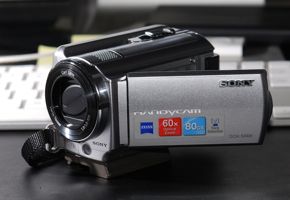Birdwatching through a pair of binoculars provides an excellent view of a perching bird. When the bird is active, the view is fleeting. There is no permanent record involved, only a fading memory. Notes made immediately after the event help but details can easily be missed. Identifications of difficult species cannot be easily challenged from descriptions alone. And mistakes made, even by the most experienced birdwatchers cannot be rectified.
Photographs provide permanent documentation of what were seen in the field. Identifications can be checked and re-checked; field behaviour can be reinterpreted and prey items can be sent to specialist biologists for identification.
The recent spate of video clips sent in by a handful of enlightened birdwatchers after we posted an account encouraging use of videocams in the field has been encouraging LINK.
Video clips have proven to be far superior to digital images. Besides providing evidence of food taken as well as swallowed, evidence that even skeptics cannot dispute LINK, video clips can also document feeding behaviour as in how a Chestnut-bellied Malkoha deals with a draco it captured LINK and how a juvenile Tiger Shrike rips through a gecko it caught LINK.
Furthermore, video clips allow for frame-by-frame examination of activities too rapid to observe, like the regurgitation of seeds after the fruits were swallowed LINK.
They also allow for the study on foraging behaviour as in the Oriental Pied Hornbill LINK; or the foraging strategies of the Great Egret LINK, how the Black Bittern stalks its quarry LINK, or how a Scarlet-backed Flowpecker actually squeezes out the fruit pulp in dealing with certain fruits LINK.
In nest building, a video clip provides details of how the bird constructs its nest, as seen in the Olive-backed Sunbird LINK.
Besides documenting activities in continuous sequences, the videocam can also record audios, especially calls and songs… as with the Oriental Magpie-robin LINK, the Common Tailorbird LINK and the Hill Myna LINK.
In intraspecific behaviour, the terrestrial dispute between two Spotted Doves LINK and that between Javan Mynas and a monitor lizard LINK provide details that images cannot. Similarly in the case of the comfort behaviour of a Great Hornbill LINK.
Two recent exciting series of video clips come to mind that project the power of this new birdwatching tool: Dr Leong Tzi Ming’s “cicada rain” (above left) LINK and Lena Chow’s “termite hatch” (above right) LINK.
Videocam has proven to be a powerful tool in birdwatching. But this does not mean that the camera has no role to play. Or even the old fashioned binoculars, especially if twitching is your vocation. However, for serious birdwatchers ever curious of what birds are doing in the field, the videocam can prove to be a powerful tool in the documentation and study of bird behaviour.
Lena Chow’s “video report” on her recent Nepal trip is a refreshing change from the usual birdwatchers’ field reports LINK. Isn’t it more refreshing than the conventional lists of species sighted? And much more educational?
Obviously the camera has long replaced the binoculars in its usefulness in data gathering. And the videocam is now fast replacing the digital camera. Birdwatchers should embrace the videocam as an important and useful tool in their activities. Video clips are informative as well as educational, helping to add on to our scarce knowledge of bird behaviour, especially in the tropics.
YC Wee
Singapore
June 2011
(Image by KC Tsang)



![cicada squirts [LeongTziMing] - 08](https://besgroup.org/wp-content/uploads/cicada-squirts-LeongTziMing-08.jpg)
![termite hatch, Chitwan [LenaChow] - 4](https://besgroup.org/wp-content/uploads/termite-hatch-Chitwan-LenaChow-4.jpg)







6 Responses
Murray Smith: I fully agree that video is the way to get good date.
You may care to have a look at two clips of a New Zealand Dotterel I have put on you Tube. I found it too difficult to keep up with the quality of still photos that appear on Websites such as Avian Watch Asia. They are magnificent photos, but I am a bird watcher at heart.
Great videos. They certainly support my views above.
I WOULD LIKE TO BE PART OF YOUR BIRDING GROUP FOR UGANDA BIRDING RESEARCH
AM BASED IN KAMPALA UGANDA WHO LOVE THE JOB YOU ARE DOING
WE NEED TO LINK IT UP FOR UGANDA BIRDING PURPOSES
AM A TOUR OPERATOR
JAMES BAKEINE
+256 772 501980